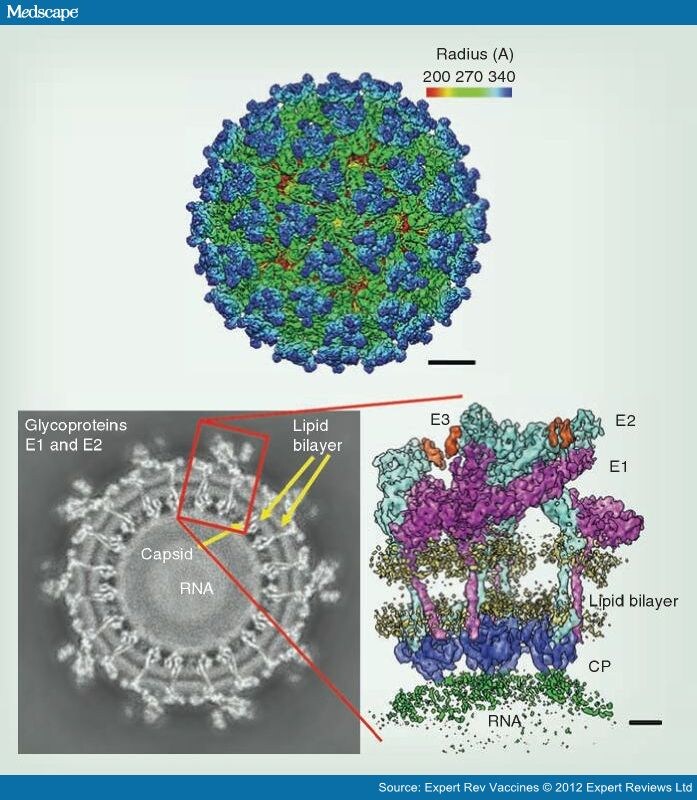CHIKV Genome, Structure & Replication
Like other alphaviruses, CHIKV contains an RNA genome of approximately 11.8 kB that is single stranded and messenger ('positive strand') sense (Figure 1). The genomic RNA is capped and polyadenylated, and encodes two open reading frames (ORFs). The 5' ORF comprises nearly two-thirds of the genome and encodes four nonstructural proteins that participate in genome replication, RNA capping, polyprotein cleavage and other functions required for viral replication. It is expressed via cap-dependent translation as an nsP1–3 or nsP1–4 polyprotein that is cleaved by an nsP2-encoded protease. By contrast, the structural protein ORF is included in a subgenomic message, which is then translated via a cap-dependent mechanism. The structural ORF polyprotein is eventually cleaved into the three main structural proteins: the capsid and the envelope glycoproteins E2 and E1.[10] The mature virion is 70 nm in diameter and contains 240 heterodimers of E2/E1 arranged as trimeric spikes on its surface (Figure 2). These heterodimer spikes are inserted into the plasma membrane of infected cells after transport through the secretory pathway. Cytoplasmic nucleocapsids containing the genomic RNA and 240 copies of the capsid protein bud from the cell surface to acquire the virion envelope and envelope protein spikes.
Figure 1.
Organization of the chikungunya virus genome, including the nonstructural and structural polyprotein open reading frames, and the 26S or subgenomic promoter.
Figure 2.
Cryoelectron microscopic reconstruction of the alphavirus virion.
Enlarged image on the right shows the orientation of the E2 and E1 envelope glycoproteins in the virion spikes.
CP: Capsid protein.
Reproduced with permission from [116].
Expert Rev Vaccines. 2012;11(9):1087-1101. © 2012 Expert Reviews Ltd.







